
As Floridians, we are very fortunate to live so close to our beautiful oceans. So, let's give our all in celebrating World Oceans Month this June!
According to the National Oceanic and Atmospheric Administration (NOAA), oceans cover over 70% of the Earth's surface, contain over 96% of the water on Earth, and about 95% of oceans are still an unexplored mystery.
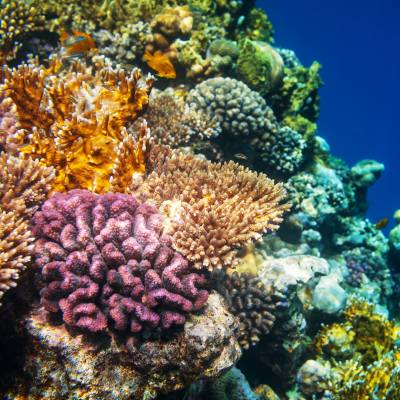
June 1 is World Reef Awareness Day, a day to reflect on the importance of our ocean's coral reefs and advocate to conserve them. Corals—particularly stoney corals—are colonies of individual polyps that grow into living marine ecosystems. Coral reefs provide vital habitats for sea life as breeding grounds, nurseries, feeding grounds and so much more. Unfortunately, according to NOAA approximately 75% of the world's reefs are threatened by human activity and ocean warming.
How can you do a small part in protecting our amazing coral reefs? UF/IFAS has a few suggestions for actions on land and sea:
- Use reef-safe sunscreen and other products made with zinc or titanium oxide
- Support and buy sustainably sourced seafood
- Don't purchase coral from gift shops
- Stick to native or ocean-friendly plants in your landscaping and garden
- Dispose of possibly harmful materials like paint or oil correctly and not down the drain
- If exploring reefs, choose eco-conscious tour operators
- Don't drop anchor directly over a reef
- Keep trash on your boat until you can dispose of it properly
- Recycle monofilament fishing line
- Scuba divers, make sure your gear isn't bumping or dragging while exploring a reef
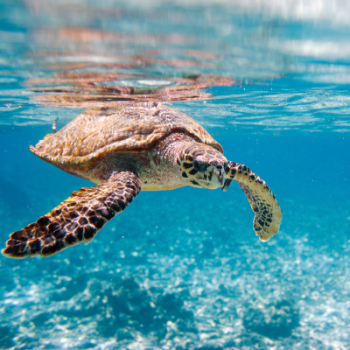
June 16 is World Sea Turtle Day, a day to celebrate sea turtles. The celebration is on the birthday of Dr. Archie Carr, who is considered the "father of sea turtle biology."
Florida is lucky to be the home of five different kinds of sea turtle: Green Turtle, Loggerhead, Leatherback, Hawksbill, and Kemp's Ridley—the rarest sea turtle in the world.
Sea turtles are endangered and, despite efforts to protect them, they are still vulnerable to loss of nesting habitat, trash in the ocean, and light pollution on shore. Knowing that, here are some ways you can help while visiting one of Florida's beaches:
• Give nesting turtles their space
• Turn off lights at night on the beach
• Properly dispose of food, trash, and fishing line
• Take part in beach clean-ups
• Don't buy items made from sea turtles parts
• Get a sea turtle license plate to raise money for sea turtle protection
• Learn more about sea turtles and share with friends and family
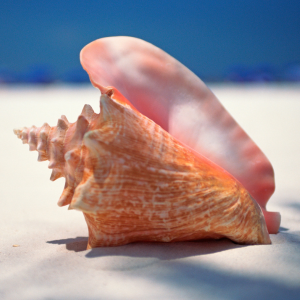
We have not forgotten National Seashell Day on June 21. It's also the first official day of summer (although, in Florida, it feels like it's been summer for a hot minute). National Seashell Day is a great day to head to the beach, take a walk by the sea, and enjoy all the beautiful shells washed onto the shore.
If you're interested in finding shells at a Florida beach, the best times to find them are at low tide, after a storm, during a strong current, in the morning, and during a full or new moon.
Read about our Oceans
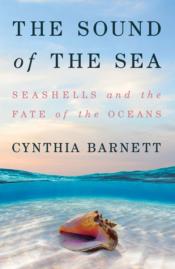
The Sound of the Sea: Seashells and the Fate of the Oceans by Cynthia Barnett
A compelling history of seashells and the animals that make them, revealing what they have to tell us about nature, our changing oceans, and ourselves.
Seashells have been the most coveted and collected of nature’s creations since the dawn of humanity. They were money before coins, jewelry before gems, art before canvas.
In The Sound of the Sea, acclaimed environmental author Cynthia Barnett blends cultural history and science to trace our long love affair with seashells and the hidden lives of the mollusks that make them. Spiraling out from the great cities of shell that once rose in North America to the warming waters of the Maldives and the slave castles of Ghana, Barnett has created an unforgettable account of the world’s most iconic seashells. She begins with their childhood wonder, unwinds surprising histories like the origin of Shell Oil as a family business importing exotic shells, and charts what shells and the soft animals that build them are telling scientists about our warming, acidifying seas.
From the eerie calls of early shell trumpets to the evolutionary miracle of spines and spires and the modern science of carbon capture inspired by shell, Barnett circles to her central point of listening to nature’s wisdom—and acting on what seashells have to say about taking care of each other and our world.
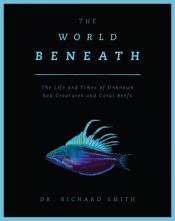
The World Beneath: The Life and Times of Unknown Sea Creatures and Coral Reefs by Richard Smith
From one of the world's premier marine biologists, an award-winning underwater photographer, and a leading expert on seahorses, comes a spectacular guide to hundreds of the ocean's fishes and coral reefs.
In this richly informative volume, brimming with new discoveries and more than three hundred colorful images, you'll swim in the Atlantic, Pacific, and Indian Oceans; you'll be dazzled in the Coral Triangle and amazed in Triton Bay. Up close you'll meet the Cenderawasih fairy wrasse, with its florescent yellow streak; the polka-dot longnose filefish; and the multicolored seadragon. There are scarlet-colored corals, baby-blue sponges, daffodil crinoids, and all sorts of mystifying creatures that change color at the drop of a hat. The whale shark is almost larger than life and the author's beloved pygmy seahorse, unless photographed, is almost too tiny to see.
The wondrous creatures inside excel in the arts of seduction and deception, and you'll have the rare chance to see and delight in their antics. You'll also learn what they eat, how they play, and how they care for one another, live on one another, and mimic others when they're afraid. There is also compelling insight into the naming process, which creatures are facing extinction, and how we can help them before it's too late.
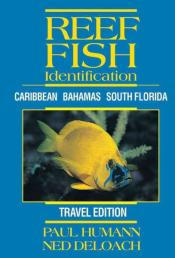
Reef Fish Identification: Caribbean, Bahamas, Florida by Paul Humann
Suitable for underwater naturalists and marine scientists, this edition contains 825 classic marine life photographs of 600 common and rare reef fish species. Designed for divers, it makes it easy to identify the myriad fishes that inhabit the waters of Florida, the Caribbean, the Bahamas, and Brazil.
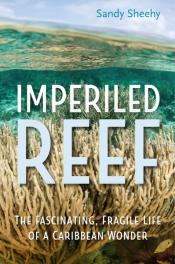
Imperiled Reef: The Fascinating, Fragile Life of a Caribbean Wonder by Sandy Sheehy
This book brings alive the richly diverse world of an underwater paradise: the Mesoamerican Barrier Reef. Stretching 625 miles through the Caribbean Sea along the coasts of Mexico, Belize, Guatemala, and Honduras, this reef is the second-largest coral structure on the planet.
Imperiled Reef searches out the breathtaking intricacies of this endangered ecological treasure. Research shows that the future of the reef is at risk, Sheehy explains. Looking closely at threats ranging from global warming to overfishing to irresponsible development, Sheehy draws attention to the inspiring efforts of nongovernmental agencies, scientists, and local communities who are working together to address these challenges. She includes practical actions individuals can take to protect this reef―as well as marine ecosystems everywhere. Celebrating a vast, submerged landscape that has too often been undervalued, Imperiled Reef is both a strong case for protecting an international marvel and a powerful message of hope for the world’s oceans.
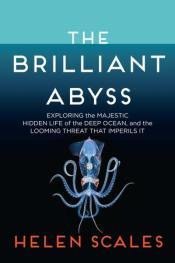
The Brilliant Abyss by Helen Scales
A golden era of deep-sea discovery is underway as revolutionary studies rewrite the very notion of life on Earth and the rules of what is possible. In the process, the abyss is being revealed as perhaps the most amazing part of our planet, its topography even more varied and extreme than its landmass counterpart.
Teeming with unsuspected life, an extraordinary, interconnected ecosystem deep below the waves has a huge effect on our daily lives, influencing climate and weather systems, with the potential for much more—good or bad, depending on how it is exploited. Currently, the fantastic creatures that live in the deep--many of them incandescent in a world without light—and its formations capture and trap vast quantities of carbon that would otherwise poison our atmosphere, and novel bacteria as yet undiscovered hold the promise of potent new medicines. Yet the deep also holds huge mineral riches lusted after by nations and corporations; mining them could ultimately devastate the planet, compounded by the deepening impacts of ubiquitous pollutants and rampant overfishing.
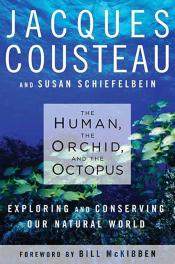
The Human, the Orchid and the Octopus: Exploring and Conserving Our Natural World by Jacques Yves Cousteau and Susan Schiefelbein
Part adventure story, part manifesto, the legendary ocean explorer's passionate plea for sustaining life on earth.
Explorer, diving pioneer, filmmaker, inventor, and activist, Jacques Cousteau was blessed from his childhood with boundless curiosity about the natural world. As the leader of fascinating, often dangerous expeditions all over the planet, he discovered firsthand the complexity and beauty of life on earth and undersea--and watched the toll taken by human activity in the twentieth century.In this magnificent last book, finally available for the first time in the United States, Cousteau describes his deeply informed philosophy about protecting our world for future generations. Weaving gripping stories of his adventures throughout, he and coauthor Susan Schiefelbein address the risks we take with human health, the overfishing and sacking of the world's oceans, the hazards of nuclear proliferation, and the environmental responsibility of scientists, politicians, and people of faith. Cousteau's lyrical, passionate call for action to protect our earth and seas and their myriad life forms is even more relevant today than when this book was completed in 1996. Written over the last ten years of his life with frequent collaborator Schiefelbein, who also introduces the text and provides an update on environmental developments in the decade since Cousteau's death, this prescient, clear-sighted book is a remarkable testament to the life and work of one of our greatest modern adventurers.
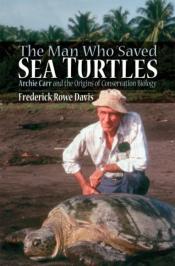
The Man Who Saved Sea Turtles: Archie Carr and the Origins of Conservation Biology by Frederick Rowe Davis
Archie Carr, one of the greatest biologists of the twentieth century, played a leading part in finding a new and critical role for natural history and systematics in a post-1950s world dominated by the glamorous science of molecular biology. With the rise of molecular biology came a growing popular awareness of species extinction.
Carr championed endangered sea turtles, and his work reflects major shifts in the study of ecology and evolution. A gifted nature writer, his books on the natural history of sea turtles and their habitats in Florida, the Caribbean, and Africa entertained and educated a wide audience.
Carr's conservation ethic grew from his field work as well as his friendships with the fishermen who supplied him with many of the stories he retold so engagingly. With Archie Carr as the focus, The Man Who Saved Sea Turtles explores the evolution of the naturalist tradition, biology, and conservation during the twentieth century.
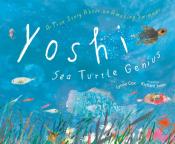
Yoshi, Sea Turtle Genius: A True Story about an Amazing Swimmer by Lynne Cox
In this picture book that is both heartwarming and exciting, join Yoshi, a sea turtle, on her remarkable journey as she swims farther than any animal in recorded history—23,000 miles!—to return to the beach where she first hatched, to lay her own eggs.
Inside every loggerhead turtle is the ability to find their first home, no matter how far away. Follow one, from her birth on a beach in Australia...to her trip across an ocean filled with sharks and seahorses and much more...to her rescue from a net by a fisherman, who names her Yoshi...to her rehabilitation at an aquarium...to her record-breaking swim across the Indian Ocean to the beach on which she hatched, to lay her eggs.
Written by Lynne Cox, also a record-breaking swimmer, here is the true story of a sea turtle who swam the longest distance of any animal in recorded history.